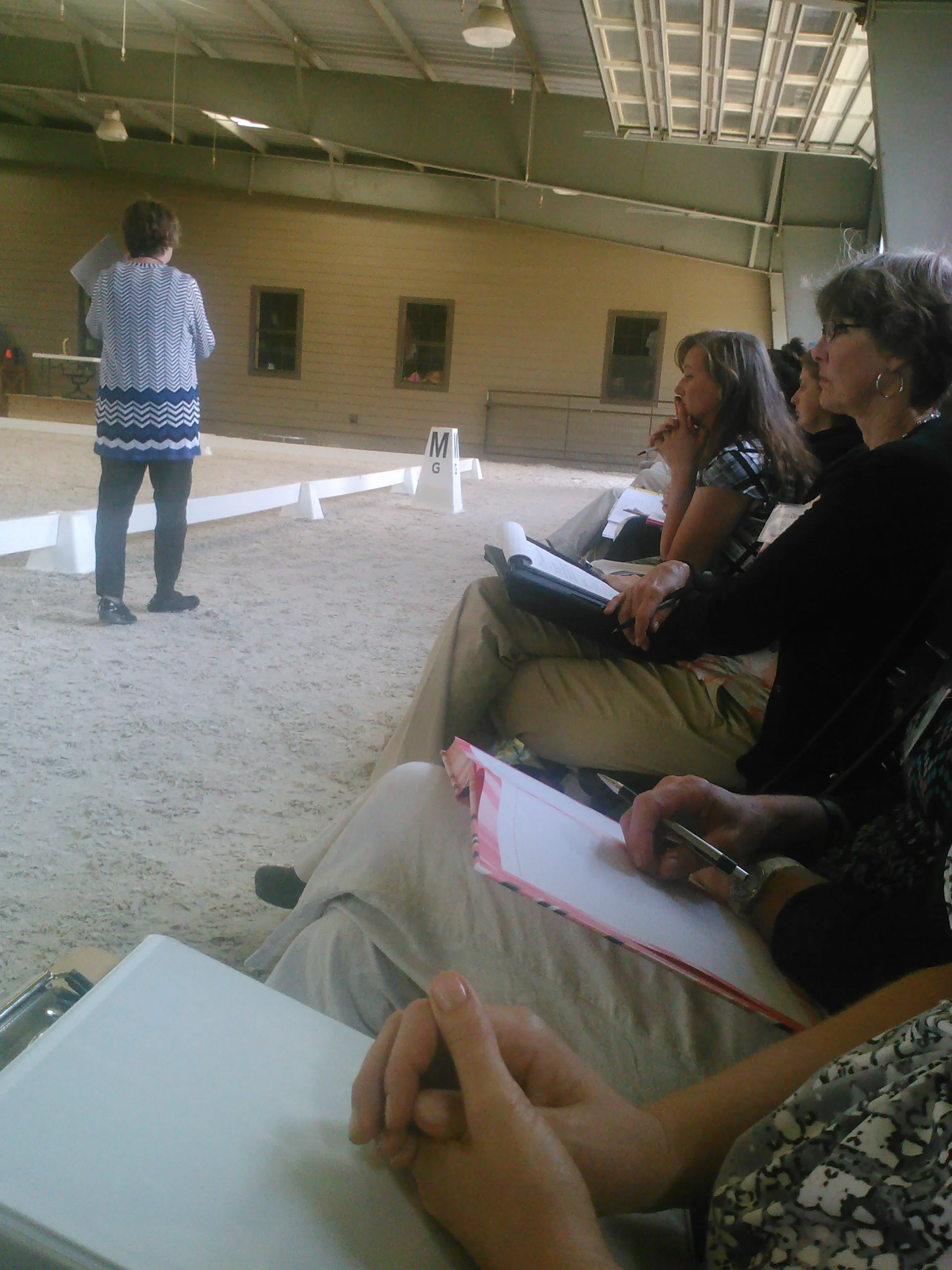Meetings and lectures aren’t my strong suit. Anyone who knows me well knows that I avoid meetings at all costs, and tend to fall asleep in lectures. But the first session of the USDF ‘L’ program at the Mid-South Dressage Academy was a fun weekend jam-packed with information and lectures! A hospital visit kept me in Wellington, Fla. until the very last minute, so I drove all night to arrive a half hour before the first lecture. Whew!
The Mid-South Dressage Academy is a beautiful property in Hernando, Miss., and every detail has been thought out. There are many stalls to accommodate horses, as well as an onsite tack store, several lounge areas, and a covered indoor with top-of-the-line footing. I took several architectural ideas home, as well as some organizational and program ideas to implement at my own facility. The farm is set up to accommodate educational programs, with a lecture hall and a beautiful balcony from which rides can be watched.
Session A was split into two phases: lectures on the first day and half of the second day, and demonstration rides on the second day. The lectures consisted of talking points, including a break down of the walk, trot, and canter, what’s expected of each gait, sharpening the eye to see irregularities, and how to judge the gaits properly. There were lots of videos presented, and by seeing a side-by-side comparison of the different types of rides and horses, we had opportunities to receive guidance on scoring the gaits, as well as how to professionally deal with issues such as lame horses in the ring. Being kind to the rider, and recognizing that our role as judges is to provide constructive feedback to help the training, was always emphasized. Judges are there to help, and want to see the rider/horse combinations succeed!
Session A focused on training through second level, with a thorough examination into the expectations at each level. With a classroom divided between future judges and rider auditors (and as a trainer myself), everyone walked away with a better understanding of the collection expected at second level, how to show and judge transitions necessary to score well at any level, as well as how to handle errors of course or unexpected events, such as naughtiness on the part of either horse or rider. Throughout the course, we were encouraged to focus on the aspects of a ride that will help promote the horse’s training. In other words, our role as a judge is to provide feedback to benefit the horse, whose interest should always prevail.
ADVERTISEMENT
The basics were always emphasized, whether the horse was an intro-level Quarter Horse, or a second level, flashy, warmblood. During the demonstration ride, where we broke down and examined each gait in real time, we were encouraged to look at each horse individually, and judge each gait individually. Most revealing was a sweet, even-tempered mare whose quality of the gaits was, on the surface, below the rest of the training level demonstration rides. When we compared canters, though, she had the best canter of the group! The instructors also revealed how we can’t judge properly unless we’ve also been experienced riders. A second level demonstration rider showed a mediocre medium trot until the instructor asked her to lighten her seat. The transformation was incredible as the medium trot became uphill, light, and very powerful! The medium trot went from a 4 (insufficient) to about an 8! The rider was thrilled, and the participants and auditors wanted to see the fantastic medium again. We were reminded about good horsemanship, and the instructor recommended not repeating the medium again since the horse had been excellent the first time.
We were encouraged to use the full spectrum of numbers available. It was noted that 10 means “excellent” and not “perfect” so we shouldn’t be afraid to give a 10 for an excellent halt, walk, etc. We were also warned that if, for example, a walk is lateral, we must reflect that in our overall gaits score, since that gait by itself is insufficient. Something for competitors to note!
The weekend was fun and informative, with the goal of promoting good training, good horsemanship, and kindness. Can’t wait for Session B!















